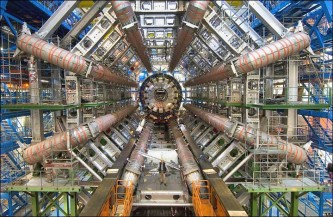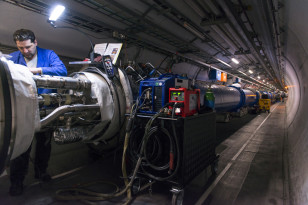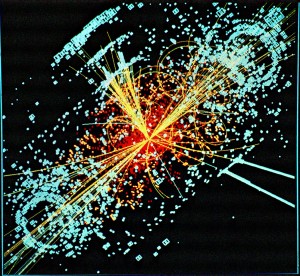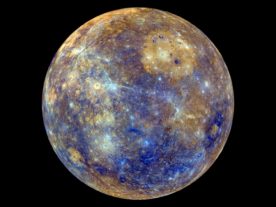
The Large Hadron Collider/ATLAS at CERN ((c) CERN)
CERN, the European Organization for Nuclear Research, has run into a bit of a snag in its plans to have its upgraded Large Hadron Collider (LHC) — the world’s largest and most powerful particle accelerator — up and running by this week for its second three-year run.
Officials are suggesting that the delay in getting the machine fully operational could be from a few days to several weeks, but the impact on LHC operation should be minimal.
On March 21, 2015, LHC operators spotted an intermittent short circuit to ground within one of the atom smasher’s eight sectors and are currently investigating the problem. The other seven sectors of the LHC, according to CERN, have already been successfully readied for operation.
Although the engineers and technicians working to get the LHC back online after a two-year shutdown understand the problem, CERN officials said it still might take a bit of time get the machine back online.

A technician works on CERN’s Large Hadron Collider, which has been upgraded for its upcoming 2nd 3 year run. ((C) CERN)
Even when the necessary repairs are made, the malfunctioning LHC sector may need to be warmed up first, and then cooled down before operators can resume the lengthy process of bringing the large particle accelerator online.
“Any cryogenic machine is a time amplifier,” said CERN’s Director for Accelerators, Frédérick Bordry in a press release. “So what would have taken hours in a warm machine could end up taking us weeks.”
Once the machine is up and running, CERN said LHC operators will take the rest of 2015 to learn more about the upgraded machine and how it performs.
Full-scale physics experiments with the Large Hadron Collider are expected to resume and run from 2016-2018.
“All the signs are good for a great run 2,” said CERN Director General Rolf Heuer. “In the grand scheme of things, a few weeks delay in humankind’s quest to understand our universe is little more than the blink of an eye.”
Since its first beam was fired in 2008, work conducted with CERN’s Large Hadron Collider has attracted a lot of attention from physicists around the world.

In a simulated data model, a Higgs boson is produced which decays into two jets of hadrons and two electrons. ((c) CERN)
Scientists searching for the mysterious and elusive Higgs boson announced on July 4, 2012 that they had discovered a new particle that could be just what they are looking for.
The Higgs boson is a theoretical elementary particle that has been put forward by the Standard Model of Particle Physics.
The Standard Model details just how the rudimentary building blocks of matter interact with the four fundamental forces of nature (gravitational, electromagnetic, strong nuclear, and weak nuclear).
During its downtime, the giant particle accelerator was upgraded by CERN to run with almost double the energy of its first run.
“With this new energy level, the LHC will open new horizons for physics and for future discoveries,” said Heuer. “I’m looking forward to seeing what nature has in store for us”.
























Comments are closed.